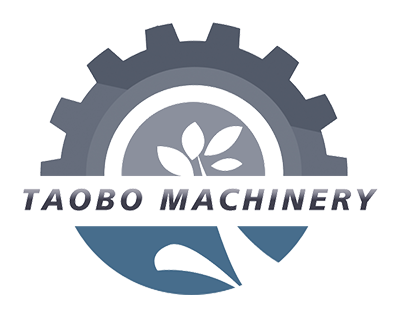The air screen cleaning machine process for kidney beans follows the core principle of “first removing large impurities, then separating fine impurities, and finally removing light impurities.” Through the synergistic effect of “mechanical screening” and “air flow separation,” the air filter gradually removes different types of impurities (large, small, and light) from the kidney beans, ultimately producing clean kidney beans.
1、 Feed Pretreatment (Uniform Feeding, Overload Prevention)
Core Objective: Control the kidney bean feed rate and flow rate to prevent incomplete cleaning in subsequent screening components due to “material accumulation” or “excessive flow rate,” thus laying the foundation for subsequent processes.
Kidney beans to be cleaned (including impurities such as straw, large clods of earth, dust, and small stones) are poured into the feed hopper. A buffer plate inside the hopper slows the beans’ fall, preventing them from breaking or clumping due to impact.
A flow regulator (manually or electrically adjustable) below the feed hopper controls the flow of beans into a thin, uniform, and continuous layer, based on the equipment’s rated capacity (typically 1-5 tons/hour for a pneumatic screen cleaner). This allows the beans to be conveyed to the next stage, the “primary cleaning screen.”
2、Primary Cleaning (Removing Large Impurities)
The core goal is to prioritize the removal of impurities significantly larger than the beans (large impurities) from the beans, preventing them from clogging the subsequent fine screens or damaging equipment components. This serves as the “first line of defense” in cleaning. Components involved: Primary cleaning screen (grid screen/perforated screen), vibrating motor, and large debris collection hopper.
The vibrating motor drives the primary cleaning screen to perform high-frequency reciprocating vibrations, forcing bean particles to fall through the gaps between the bars/sieve holes. Large debris (straw, large clumps of soil, and unbroken pods) are too large to pass through and are driven by the vibration toward the “large debris outlet” at the end of the screen, ultimately falling into the “large debris collection hopper.”
Special design: A debris baffle is installed at the end of the primary cleaning screen to prevent large debris from rebounding and mixing with the falling beans, ensuring a large debris separation rate of ≥99%.
3、 Fine Screening (Separation of Small Beans and Odd-Shaped Beans)
Core Objective: Remove small impurities (small debris) and immature, shrunken beans from the kidney beans, achieving “size classification.” This is the core stage that determines the accuracy of kidney bean cleaning. Parts involved: Main screen (double-layer perforated screen), vibrating motor, small debris collection hopper, oversized debris outlet.
Upper screen (pore size 12-14mm, slightly larger than the kidney beans):
Among the kidney beans falling from the primary cleaning screen, a small amount of “immature, shrunken kernels” (small particle size) and fine soil will pass through the upper sieve holes and fall into the lower sieve. However, a small amount of “oversized debris” (such as incompletely peeled bean hulls) cannot pass through the upper sieve holes and are discharged from the “oversized debris outlet” due to vibration.
Lower sieve (pore size 6-8mm, slightly smaller than the kidney beans):
Among the “shrunken kernels + fine soil + small debris (pebbles, broken beans, grass seeds)” falling from the upper sieve, small debris (particle size <6mm) will pass through the lower sieve holes and fall into the “small debris collection hopper.” Healthy kidney beans that meet the particle size requirements (and cannot pass through the lower sieve holes) remain on the lower sieve surface and are vibrated toward the “air separation channel.” Conveying;
4、Airflow Sorting (Removing Light Impurities, Ultimate Cleanliness)
Core Objective: Remove light impurities (dust, grass debris, and shrunken hulls) that are “far heavier than the beans” from kidney beans. This is achieved by gravity separation through airflow buoyancy differences. This is the final step in the cleaning process.
Air Separation:
Beans delivered from the main screen fall into the air separation channel as single, dispersed beans through the “dispersion outlet.”
Healthy beans, due to gravity significantly outweighing the airflow’s buoyancy, rapidly pass through the airflow zone and fall vertically into the “clean bean collection hopper.”
Light impurities (dust and grass debris), due to gravity being less than the airflow’s buoyancy, are blown by the horizontal airflow toward the “light impurity outlet” on the side of the channel and ultimately into the “light impurity collection bag.” (Some models are equipped with a cyclone separator at the light impurity outlet to prevent dust from dispersing.)
Summary: Complete kidney bean cleaning process
Beans to be cleaned → Feed hopper → Primary cleaning screen → Upper main screen → Lower main screen → Air separation channel → Clean beans
The entire process utilizes the dual effects of “screening and air separation” to achieve the phased removal of different types of impurities. This ensures cleaning accuracy while avoiding the limitations of a single process. It is currently the mainstream and efficient solution for large-scale kidney bean cleaning.
Our cleaning machine is suitable for a variety of legumes and grains, including soybeans, mung beans, chickpeas, pigeon peas, coffee beans, peanuts, sesame seeds, quinoa, and more. If you have any needs, please contact us as soon as possible!
Post time: Sep-30-2025










